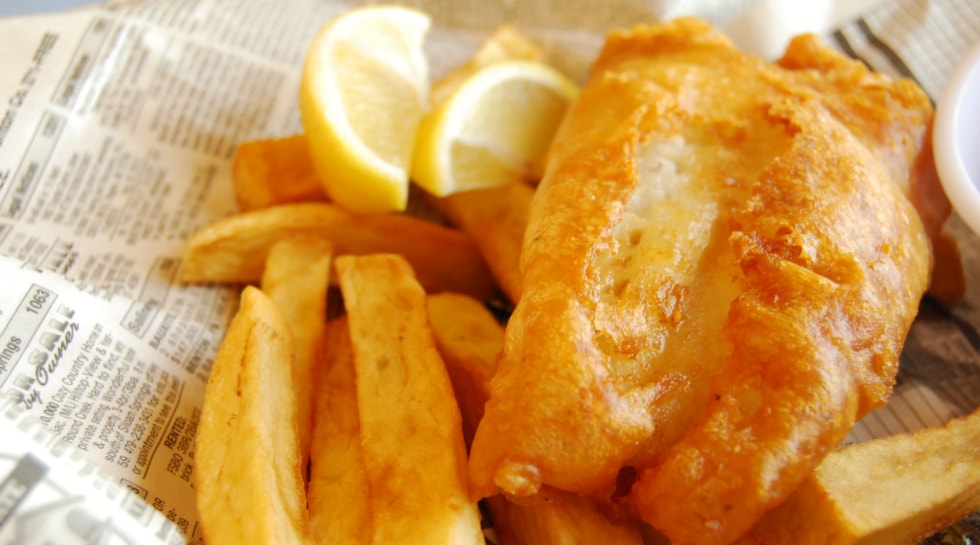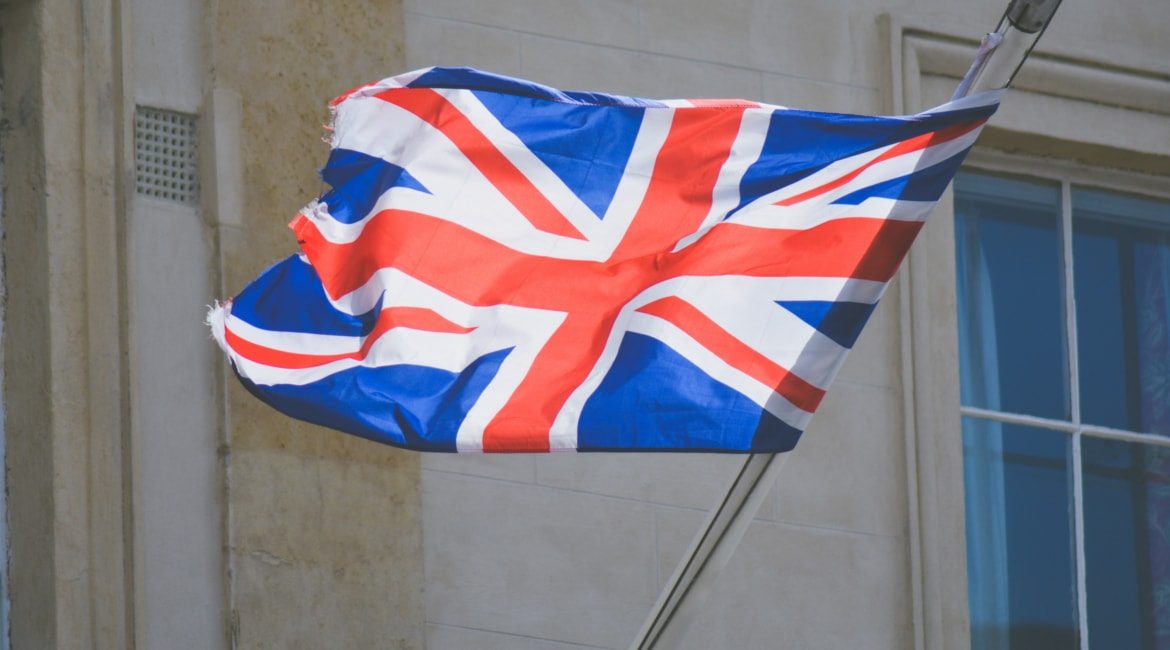Fish and chips are good companions
Winston Churchill
Now here is a topic dear to my heart. When I was a wiry young fellow, “fish ‘n’ chips” was my very favorite dish – cheap, yummy and filling. I looked for the stuff wherever I went, and I ranked its quality in my memory – and all these decades later – I still do. For our purposes I’ll treat fish and chips (“F&C”) as a single item. Thus, it’s “F&C is delicious” – not F&C are delicious”. You OK with that?
I noticed no two places did F&C exactly the same way – there were definite differences from place to place: what type of fish, what kind of batter, what calibre and colour of chips, the kind of oil, what newspaper it was wrapped in – that sort of thing. And you could tell instantly if a particular product was a winner or loser. Truly, there’s absolutely no middle ground when it comes to the quality of F&C.

Now that I’m getting on in years and have attained, some say, a certain measure of portliness, I eat F&C only on special occasions. And on these occasions I must be certain that what I’m getting is top-notch. I don’t gamble on matters of such importance, and so I study online restaurant reviews.
Why, I ask you, should I run the risk of sharp and memorable disappointment? Sometimes I even visit a particular restaurant to observe, and to surreptitiously interview diners, before committing to eating there myself. Call me crazy…
F&C is one dish that, if it’s done really well, is a respectable culinary achievement – “Excellence for Everyman”, you might say. But a bull’s-eye on this particular target is evidently hard to hit -and most sorely miss the mark. Bad F&C is apt to be – as I once said to a restaurant manager – “a greasy mess”.
There are, it seems, many way to do F&C badly, but probably only one way to do it properly.
I hate to be snobbish about it, but we really must keep up our standards – or there goes civilization.
What follows has a peculiarly British orientation. This is fitting, because F&C is a quintessentially British dish. It’s been called “Britain’s favourite dish”- even “a national obsession”- as much a part of Britain as Shakespeare, Cricket and Westminster Abbey. F&C clearly outclasses would-be competitors like Bubble & Squeak, Bangers & Mash, and Spam & Eggs. F&C indeed smashes through all class distinctions: London sewer-workers love it – so do the Royals – and most everyone in between.
Let’s look at the high points in the history of this gastronomic treasure. The idea of deep-fried fish was brought to England in the 17th century by Jewish immigrants fleeing persecution in Spain. They called it pescado frito.
The first time “chips” of this sort were mentioned in literature was in 1859 in Dickens’ A Tale of Two Cities. He wrote of “husky chips of potatoes fried with some reluctant drops of oil”.The following year, one Joseph Malin opened the first F&C shop in London; he sold fish “fried in the Jewish fashion”. He used a cauldron of cooking fat over a coal fire. The thought makes my mouth water.
Thereafter F&C’s popularity quickly grew due to the easy availability of ingredients and a good rail distribution system. By WWI, F&C had become known as “chief among the home comforts”, and the wartime government kept it abundantly available in order to keep the “people in good heart”.

So, by the 1930s there were a staggering 35,000 F&C shops in the land. And was the stuff ever cheap! George Orwell, in The Road to Wigan Pier (1937) wrote: “You can’t get much meat for threepence, but you can get a lot of fish and chips.” Also, during WWII, it was government policy that F&C not be rationed – a wise policy, indeed.
I could rattle on interminably on this pet subject, but my editor won’t have it. Therefore, I humbly offer a few points of interest; they will have to do for the moment.
- The fish most commonly used in the UK is haddock or Atlantic cod. (The bottom-of-the-line fish is an abomination called “rock salmon”. This is a great deceit; it’s actually bloomin’ dogfish! As a life-long fisherman myself, I declare it is not fit for human consumption, even in a pinch. I had it once – it was perfectly revolting! I’m told self-respecting alley-cats turn their noses up at it.)
- The chips are usually made from a type of potato called Maris Piper (“Chippy’s Choice”). This breed was introduced in the 1960s, and has become the most esteemed potato in the kingdom. A celebrity chef, Heston Marc Blumenthal, OBE, of the Fat Duck restaurant in Bray, Berkshire, says the Maris Piper is “in a class of its own”. And he should know it.
- The batter is normally made from flour, water, baking soda and vinegar. Sometimes beer is used instead of water, which colours the product a lovely orange-brown. M-m-m-m-m.
- The oil is of paramount importance if you want the best fish and chips. The best oil – believe it or not – is melted pig lard. This fact will make health-conscious people gasp and clutch their chests in horror – but it’s true. Each year there’s a competition among top British F&C shops to determine which is the best; the winners indeed usually use lard.
- Kingfisher Fish & Chips in Plymouth, Devon was named “The Best Independent Takeaway Fish & Chip Shop in the U.K.” for 2017. They are indeed three-time You can read reviews at www.kingfisherfishandchips.co.uk. The word lard is absent from their website.
- With all the F&C being consumed in the UK, it’s clear that tons of fat goes straight down the drain. Of course, it congeals in there – which sometimes causes sewers to get plugged with greasy sludge. I read recently of what’s called a Fatberg in a major London sewer. It weighs as much as 11 double-decker buses (140 T), and is 200 yards long. (That’s some pile o’ fat…. this sort of thing must provide great job-security for sewer workers.) These chaps are helped in the clean-up by Petrotec, a German firm that converts waste fat into biodiesel fuel. This all makes one’s head spin.
That’s enough for now. In closing, let me tell you about my peak fish and chips experience. It was in 1989 in a ramshackle restaurant in the town of Quetzaltenango, in the Western Highlands of Guatemala. The setting was dry, dusty and rather threatening – guns, vigilantes, and so on. It was like a scene in a Spaghetti Western. But we were hungry, and decided to eat lunch anyway.The meal itself was simple: deep-fried crayfish and potatoes, washed down with Coke. It was, believe me, surpassingly delicious. I later found out the cook’s secret: she fried the ingredients in beef fat— the fat from splendid local Nelore cattle. Indescribable! Unforgettable! Worth a trip back.
Nothing I’ve had since has even come close – but I am still looking!






Facebook Comments